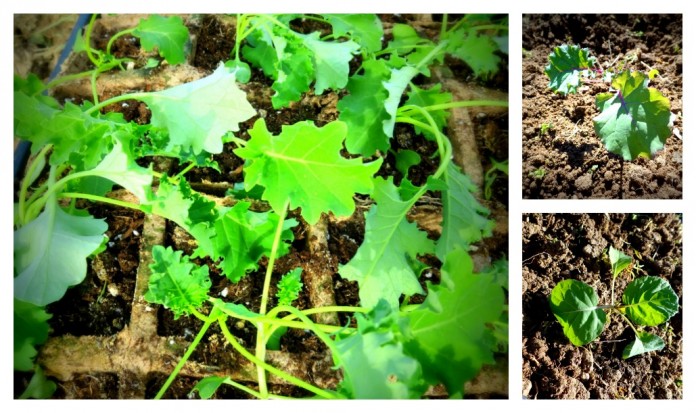Seedlings? Check.
Garden tools? Check.
Hungry for homegrown? Check. CHECK!
It’s time to transplant seedlings in the garden. Proper preparation, timing and technique help seedlings become healthy and productive plants.
Strong seedlings
Good candidates for transplanting have stocky stems and vibrant green foliage. Seedlings should have true leaves, which look different from the first set of leaves (cotyledons) on the stem.
A well-developed root system is a good indicator of plant vigor. Gently lift seedling from container. Look for roots that hold soil together but are not pot-bound. Healthy roots are white in color.
Bed preparation
Work soil free of clumps. Remove weeds. A level bed makes row-planting easier and provides better drainage.
Add soil amendments to fix texture or pH problems. Finished compost or fertilizer can be worked into soil to improve nutrient levels.
Perform a soil test if you are not sure of your soil’s current pH or nutritional condition. A professional lab test is most accurate. Results are returned in 1-2 weeks. A home test kit is less precise, but provides an instant reading.
Hardening
Seedlings should be hardened before transplanting.
How to harden-off seedlings
- Move seedlings outdoors during warm, sunny daylight hours. Bring inside at night.
- Decrease watering.
- Increase the amount of time seedlings spend outdoors until they spend 24 hours a day outside.
- Expose seedlings to wind, rain and other adverse weather conditions.
- Do not expose seedlings to frost or freezing conditions during hardening.
- After 10 days of hardening, your seedlings will have acclimated to outdoor conditions and are ready to transplant in the garden.
Transplanting
The best time to transplant is late afternoon when the ground is warm and sun rays are less harsh.
How to transplant
- Dig a hole slightly deeper and larger than seedling container.
- I add a handful of finished compost to each hole to give seedlings a jump-start. Watering with compost tea after planting is another way to boost seedling health. Skip this step if you amended soil with compost or fertilizer during bed preparation.
- Remove seedling from container. Skip this step if you are using egg shell, newspaper or other biodegradable containers.
- Place seedling level with soil. Tomatoes and broccoli can be planted slightly deeper.
- Surround seedling with displaced soil.
- Water deeply.
















